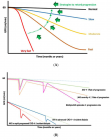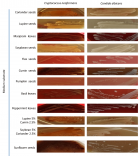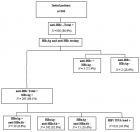Abstract
Mini Review
An analysis of wild animals with respect to French Ethics and Law
Jean Claude Nouet* and Jerome Brigaudeau
Published: 09 May, 2019 | Volume 3 - Issue 1 | Pages: 014-022
Before discussing the crux of the matter, it is important to understand what “wild” signifies and the characteristics that define a wild animal.
As contrasted to domesticated animals, a wild animal can be defined as an animal living freely in his natural habitat, independently of Man. These animals are only exposed to variations in the biological equilibrium, to the imperatives of their genetic program and live in a habitat that gives them the possibility of expressing it themselves.
However, this definition is very narrow as there exist a number of species of wild animals that don’t live freely in their natural habitat. These animals are constrained by Man, who by creating a relationship of dependence, controls them and in turn becomes responsible for their sustenance. In such a situation, their habitat is no more their natural habitat but than which has been imposed on them by Man; such animals are said to be “held in captivity” or even “tamed”.
In short, when talking about law and ethics related to wild animals, there are two things to be taken into account: wild animals that live in the wild and wild animals that live held in captivity by Man.
Read Full Article HTML DOI: 10.29328/journal.ivs.1001015 Cite this Article Read Full Article PDF
References
- Law No. 2015-177 of 16 February 2015 on the modernization and simplification of law and procedures in the fields of justice and home affairs.
- Antoine S. The right of the animal. Paris. Legis France.2007; 380.
- Proposition recognizing the animal's character of being alive and sensitive in the code civil, registered in the presidency of the Senate on 7 June 2011 under number 575.
- Definition elaborated and proposed by the Animal Rights Foundation, Ethics and Sciences. 2011.
- Terrestrial Animal Health Code, OIE-World Organization for Animal Health, Paris, 2010. Ref.: https://tinyurl.com/yyrghkt3
- Opinion of ANSES (National Agency for Food Safety, Environment and Labor) on animal welfare: context, definition and evaluation », 25 avril. 2018.
- Antoine S. The legal status of wild animals. International Animal Protection Law Bulletin. 1997; 19-28.
- Coulon JM, Nouët JC. The rights of the animal. Paris. Dalloz. 2009; 146.
- Auffret van der Kemp T. Sensitivity to the sensitivity of animals in France, Symposium Does the animal suffer in law. Quebec Journal of International Law n°241. 2011; 217-236.
- Insee References, 2017 Edition - Agriculture - Fisheries (Source: Maritime Fisheries and Aquaculture Directorate).
- Law No. 2016-1087 of August 8, 2016 for the Recovery of Biodiversity, Nature and Landscapes. Directive 2010/63 / EU of the European Parliament and of the Council of 22 September 2010 on the protection of animals used for scientific purposes, art.1-3-
- Directive 2010/63/UE of the European Parliament and of the Council of 22 September 2010 on the protection of animals used for scientific purposes, art.1-3-b.
- Nouët JC, Baudet HM, Sueur C. Protection of animals used for scientific purposes. Animal Law, Ethics and Science Review, n°96, January 2018.
- Proposition recognizing the wild animal's status as living and sensitive in the Civil Code and the Environment Code, registered at the presidency of the Senate on 24 June 2011 under the n°670.
- Wild animals sentient sentient beings? Official Gazette of Hunting and Nature. 2011; 1.
- Bernie R. It has never been possible to show that an animal can experience the slightest sensation comparable to a human feeling. On the contrary, everything leads one to believe that he leads a perfectly vegetative life, closer to the plant than to man. Official gazette of the hunt, 15 mars 1986.
- Boisseau-Sowinski L, Chronique. The impact of the Law of August 8, 2016 for the recon quest of biodiversity, nature and landscapes on animal rights. Half-yearly review of animal rights. 2016.
- Nouët JC. In the mirror. Animal Law, Ethics and Science Review. 2012.
Similar Articles
-
Exploring novel medical applications for commonly used veterinary drug (tilmicosin antibiotic)Fatma I Abo El-Ela*,El-Banna HA. Exploring novel medical applications for commonly used veterinary drug (tilmicosin antibiotic). . 2017 doi: 10.29328/journal.ivs.1001001; 1: 001-016
-
Investigation on Theileria lestoquardi infection among sheep and goats in Nyala, South Darfur State, SudanOsman TM,Ali AM*,Hussein MO,El Ghali A,Salih DA. Investigation on Theileria lestoquardi infection among sheep and goats in Nyala, South Darfur State, Sudan. . 2017 doi: 10.29328/journal.ivs.1001002; 1: 017-023
-
Mechanism-related Teratogenic, Hormone Modulant and other Toxicological effects of Veterinary and agricultural surfactantsAndrás Székács*. Mechanism-related Teratogenic, Hormone Modulant and other Toxicological effects of Veterinary and agricultural surfactants. . 2017 doi: 10.29328/journal.ivs.1001003; 1: 024-031
-
Efficacies of 11% Lactoferricin and 0.05% Chlorhexidine Otological Solution compared, in the treatment of microbial otic overgrowth: A randomized single blinded studyLuisa Cornegliani*,Federico Leone,Francesco Albanese,Mauro Bigliati,Natalia Fanton,Antonella Vercelli. Efficacies of 11% Lactoferricin and 0.05% Chlorhexidine Otological Solution compared, in the treatment of microbial otic overgrowth: A randomized single blinded study. . 2017 doi: 10.29328/journal.ivs.1001004; 1: 032-041
-
Ocular surface Rose Bengal staining in normal dogs and dogs with Keratoconjunctivitis Sicca: Preliminary findingsWilliams DL*,Griffiths A. Ocular surface Rose Bengal staining in normal dogs and dogs with Keratoconjunctivitis Sicca: Preliminary findings. . 2017 doi: 10.29328/journal.ivs.1001005; 1: 042-046
-
Influence of Vitamin E on the Disposition Kinetics of Florfenicol after single and multiple oral administrations in Broiler ChickensFatma Ibrahim Abo El-Ela*,Hossny Awad El-Banna,Manal B El-Deen,Tohamy MA. Influence of Vitamin E on the Disposition Kinetics of Florfenicol after single and multiple oral administrations in Broiler Chickens. . 2017 doi: 10.29328/journal.ivs.1001006; 1: 047-057
-
Effects of carazolol on electrocadiographic and trace element status in sheepsRemzi Gonul,Lora Koenhemsı,Handan Aydın Vural*,Tevfik Gulyasar,Hasret Demırcan Yardıbı,Erman OR,Bora Barutcu. Effects of carazolol on electrocadiographic and trace element status in sheeps. . 2018 doi: 10.29328/journal.ivs.1001007; 2: 001-004
-
Livestock insurance a tool to reduce economical loss of farmers from climate change related HazardsAnanta Koirala*,Priyanka Bhandari. Livestock insurance a tool to reduce economical loss of farmers from climate change related Hazards. . 2018 doi: 10.29328/journal.ivs.1001008; 2: 005-008
-
The failure to provide an effective veterinary service to sheep in AustraliaJAL Maxwell*. The failure to provide an effective veterinary service to sheep in Australia. . 2018 doi: 10.29328/journal.ivs.1001009; 2: 009-017
-
Does Veterinary Science have a future in Australia?JAL Maxwell*. Does Veterinary Science have a future in Australia?. . 2018 doi: 10.29328/journal.ivs.1001010; 2: 018-026
Recently Viewed
-
High-Grade Endometrial Mesenchymal Sarcoma: Current Status and Future TrendsLushuang Zhang, Liubiqi Zhao*. High-Grade Endometrial Mesenchymal Sarcoma: Current Status and Future Trends. Clin J Obstet Gynecol. 2023: doi: 10.29328/journal.cjog.1001141; 6: 132-134
-
COVID-19 Vaccines Development: Challenges and Future PerspectiveSwapan Kumar Chowdhury,Niranjan Kumar Mridha,Abdul Ashik Khan,Nabajyoti Baildya,Manab Mandal*,Narendra Nath Ghosh*. COVID-19 Vaccines Development: Challenges and Future Perspective. Int J Clin Virol. 2025: doi: 10.29328/journal.ijcv.1001064; 9: 010-020
-
Treatment protocol with alternative iron drugs in patients with an allergic reaction during iron replacement therapySaltuk Buğra Kaya*. Treatment protocol with alternative iron drugs in patients with an allergic reaction during iron replacement therapy. Arch Asthma Allergy Immunol. 2023: doi: 10.29328/journal.aaai.1001030; 7: 001-004
-
Detection of Transferrin Oxidative Modification In vitro and In vivo by Mass Spectrometry. Hereditary Hemochromatosis is a ModelMohamed Ahmed*. Detection of Transferrin Oxidative Modification In vitro and In vivo by Mass Spectrometry. Hereditary Hemochromatosis is a Model. Ann Proteom Bioinform. 2025: doi: 10.29328/journal.apb.1001025; 9: 009-019
-
A Short communication on Pichia pastoris vs. E. coli: Efficient expression systemViswanath Vittaladevaram*. A Short communication on Pichia pastoris vs. E. coli: Efficient expression system. Ann Proteom Bioinform. 2021: doi: 10.29328/journal.apb.1001016; 5: 049-050
Most Viewed
-
Feasibility study of magnetic sensing for detecting single-neuron action potentialsDenis Tonini,Kai Wu,Renata Saha,Jian-Ping Wang*. Feasibility study of magnetic sensing for detecting single-neuron action potentials. Ann Biomed Sci Eng. 2022 doi: 10.29328/journal.abse.1001018; 6: 019-029
-
Evaluation of In vitro and Ex vivo Models for Studying the Effectiveness of Vaginal Drug Systems in Controlling Microbe Infections: A Systematic ReviewMohammad Hossein Karami*, Majid Abdouss*, Mandana Karami. Evaluation of In vitro and Ex vivo Models for Studying the Effectiveness of Vaginal Drug Systems in Controlling Microbe Infections: A Systematic Review. Clin J Obstet Gynecol. 2023 doi: 10.29328/journal.cjog.1001151; 6: 201-215
-
Causal Link between Human Blood Metabolites and Asthma: An Investigation Using Mendelian RandomizationYong-Qing Zhu, Xiao-Yan Meng, Jing-Hua Yang*. Causal Link between Human Blood Metabolites and Asthma: An Investigation Using Mendelian Randomization. Arch Asthma Allergy Immunol. 2023 doi: 10.29328/journal.aaai.1001032; 7: 012-022
-
An algorithm to safely manage oral food challenge in an office-based setting for children with multiple food allergiesNathalie Cottel,Aïcha Dieme,Véronique Orcel,Yannick Chantran,Mélisande Bourgoin-Heck,Jocelyne Just. An algorithm to safely manage oral food challenge in an office-based setting for children with multiple food allergies. Arch Asthma Allergy Immunol. 2021 doi: 10.29328/journal.aaai.1001027; 5: 030-037
-
Impact of Latex Sensitization on Asthma and Rhinitis Progression: A Study at Abidjan-Cocody University Hospital - Côte d’Ivoire (Progression of Asthma and Rhinitis related to Latex Sensitization)Dasse Sery Romuald*, KL Siransy, N Koffi, RO Yeboah, EK Nguessan, HA Adou, VP Goran-Kouacou, AU Assi, JY Seri, S Moussa, D Oura, CL Memel, H Koya, E Atoukoula. Impact of Latex Sensitization on Asthma and Rhinitis Progression: A Study at Abidjan-Cocody University Hospital - Côte d’Ivoire (Progression of Asthma and Rhinitis related to Latex Sensitization). Arch Asthma Allergy Immunol. 2024 doi: 10.29328/journal.aaai.1001035; 8: 007-012

If you are already a member of our network and need to keep track of any developments regarding a question you have already submitted, click "take me to my Query."



















































































































































